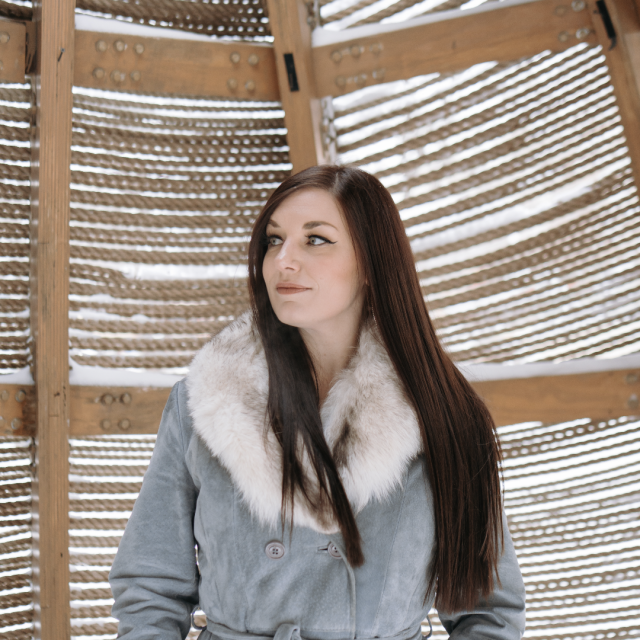May 2015
Crowdfunding Crash Course: Nils Karlén - Simon Stålenhag's Tales from the Loop” & "Swedish Machines, Lonely Places
- by Alyson Shane
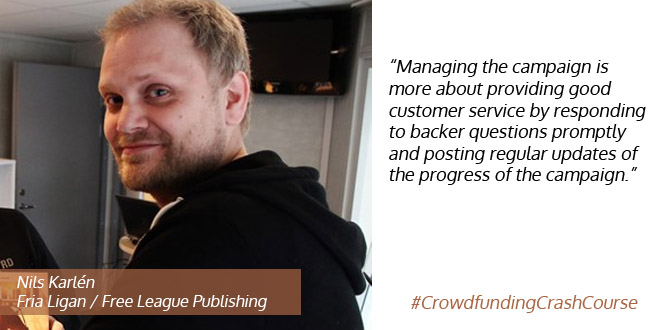
Nils Karlén runs Fria Ligan (Free League Publishing) and managed the Kickstarter for Swedish sci-fi artist Simon Stålenhag's two art books Tales from The Loop and Swedish Machines, Lonely Places.
Can you briefly describe Simon Stålenhag's “Tales from the Loop” & "Swedish Machines, Lonely Places"?
Simon Stålenhag’s digital paintings of Sweden in the 80’s and 90’s mixes science fiction with realistic landscape scenery. His work has been very popular on the Internet and he has been featured and interviewed by Wired, The Guardian and The Verge among others.
I run a small publishing company called Free League Publishing (or Fria Ligan in Swedish) together with some friends and when we first saw Simon’s paintings we fell in love with the mix of sci-fi and the “Swedishness” of the paintings. A friend came up with the idea that we should work together which we thought was a brilliant idea. So we approached him about making an art book together and had a few drinks when we discoverad that we all liked the same John Carpenter movies from the 80’s. Done deal!
The art book “Ur varselklotet” was published last autumn in Sweden and got an overwhelmingly good response. Two print runs later, and a lot of orders from across the world we realized that we had to do an English version as well. As Simon was well ahead with paintings for a second book, we decided it was just as well to crowdfund two books at the same time!
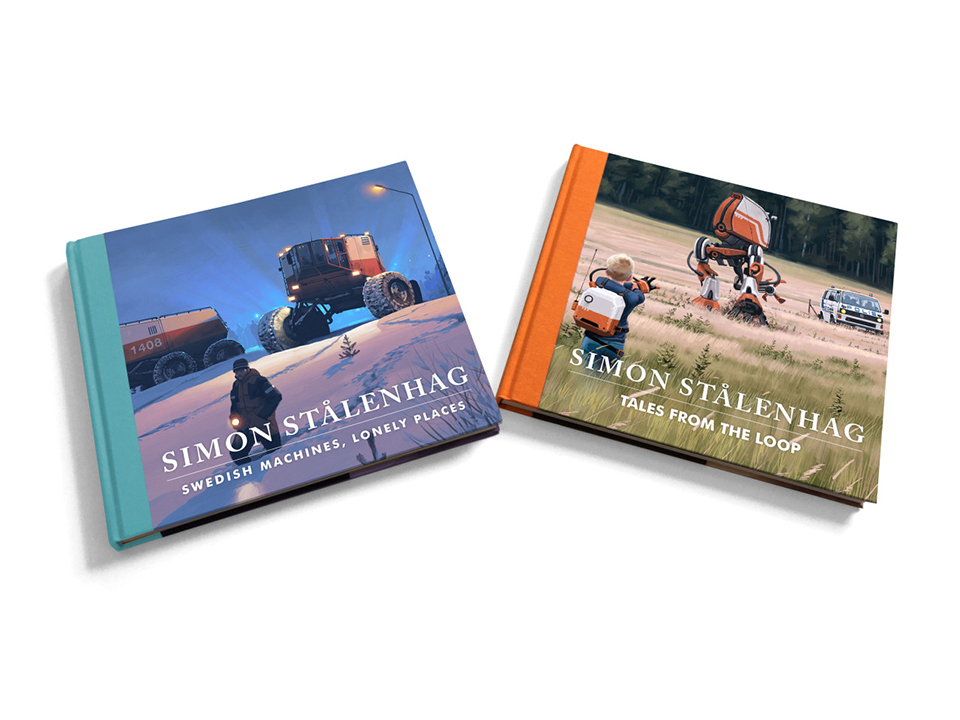
Why did you feel that the crowdfunding model was the best way to promote the books?
It was a natural fit. In part because we knew that Simon already had an enthusiastic fanbase (his Tumblr page has a lot of followers), and partly because we already had done two very succesfull crowdfunding campaigns for our games in Sweden. Also, we knew there was a demand for art books with his paintings as we had received loads of requests from all parts of the world.
Why and how did you choose Kickstarter over other crowdfunding options available?
It was an easy decision. We have previously run two campaigns using the Swedish Fundedbyme for the first and Indiegogo for the second. We really liked Indiegogo and it has a large following in Europe, however when it comes to the US, Kickstarter really is king. So it was natural to choose Kickstarter for this project, and I think the campaigns progress really shows the strength of the platform.
How far along was your project before you felt ready to launch a crowdfunding campaign? In hindsight, would you have preferred to be farther along, or to have crowdfunded earlier?
We are kickstarting two books, the first one was already translated and ready to go more or less. The second one is still in development and as Simon produces maybe one painting a week we are looking at publishing it during 2016. From the perspective of the crowdfunding campaign it would obviously be better if we could deliver both books at the same time, to save shipping costs if nothing more. However, I think it’s really good to be able to deliver something rather quickly, and the first book will be that something!
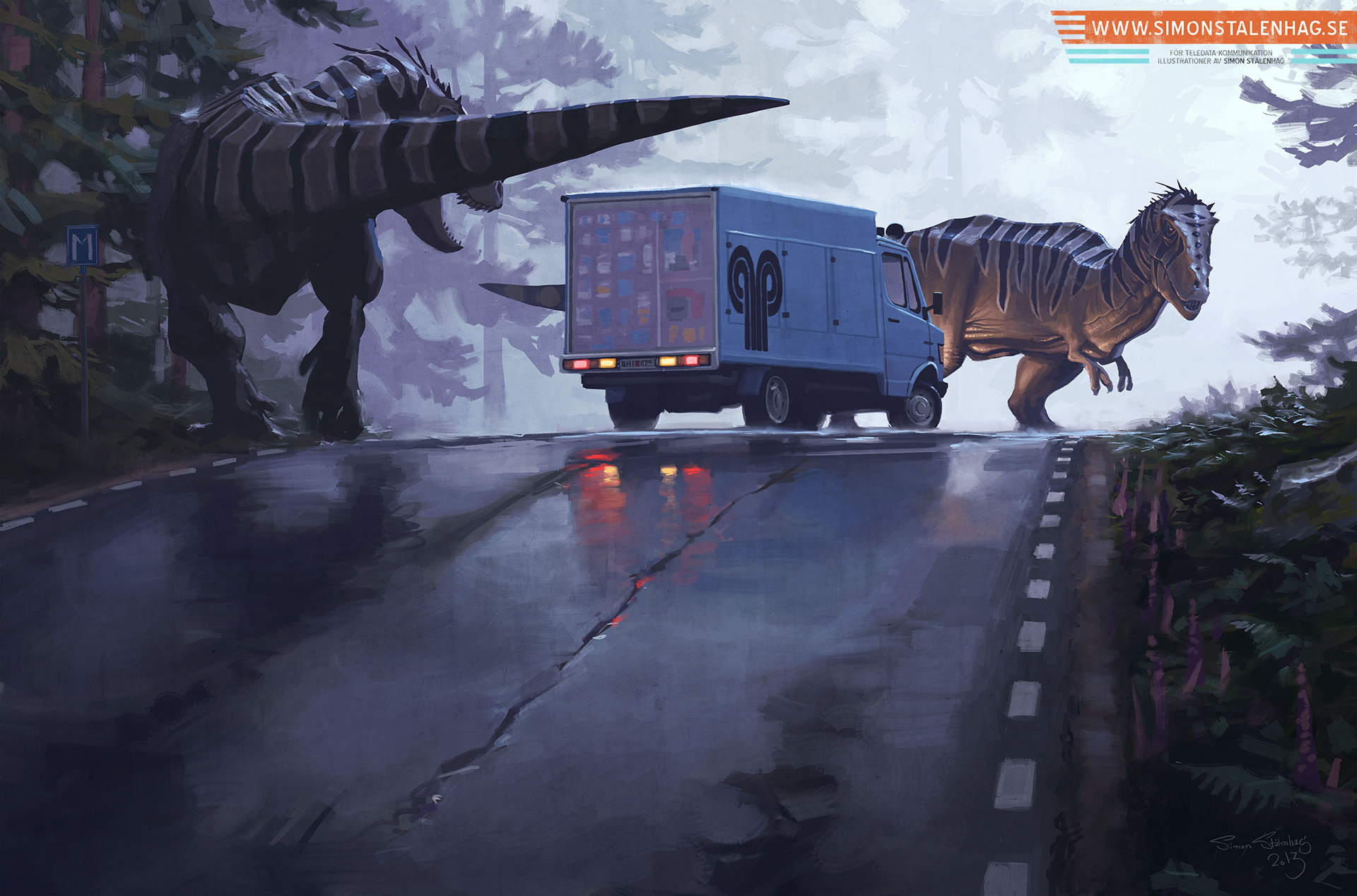
Can you explain how you prepared for and managed your campaign?
We did have some experience as we had run crowdfunding campaigns in Sweden previously so we the basics covered. However Kickstarter was unknown territory for us so we did do quite a bit of research beforehand. We read articles, looked at some successful campaigns and tried to find common denominators and so on. For instance I learned that having a very low first pledge level (a single dollar or so) is important to get the campaign moving as Kickstarters metrics considers every pledge, big or small. Also early bird pledges was something we picked up during this phase.
Managing the campaign is more about providing good customer service by responding to backer questions promptly and posting regular updates of the progress of the campaign. Also I think it’s very important to listen to the feedback that you inevitable will get from the backers.
What tools did you use to market your campaign? Do you feel like you did so successfully, and if not, what could you have done differently?
We used our own Facebook and twitter accounts to spread the world, but really what made the difference was that Simon himself used his twitter, web page and especially his Tumblr page to market the campaign. We also had a list of international media that we contacted after the launch of the campaign, but initially this met with mixed success as I guess our press release drowned in the mix. However, we got lucky when The Verge featured our project on the first day of the project and word of mouth started to get going, especially through twitter. Since then it has just been snowballing along!
In retrospect what were your best assets for running this successful campaign? On the other hand, what would you do differently?
To be honest our biggest asset was Simon’s paintings. Having beautiful and eye-catching imagery in the campaign cannot be underestimated I think.
The biggest mistake we did was that we did not realize that as a backer you can only choose one pledge level. As we kickstarted two books and had a lot of different levels with just one of the books this proved to be a challenge to handle. It did work out great in the end as we helped backers as much as possible so that they could get both books in the edition they wanted but this one one area where our research did not prove enough.
What was your biggest challenge during your campaign?
To be honest we were taken by surprise the initial success and struggled a bit to provide enough stretch goals to the campaign, so I would definitely say that was our biggest challenge.
What’s the most valuable advice you could share with aspiring crowdfunders?
Do your homework, prepare for success and plan for – if not failure but an uphill struggle. Make sure you got a good set of stretch goals planned and at least an idea of another set if you need to add ones quickly. Also: communicate all the time!
This post is part of the #CrowdfundingCrashCourse series. You can find the entire series of interviews and summary posts here.
7 Steps to Grow Your Social Influence
- by Alyson Shane
Back in the days of yore (read: pre-social media times) most of what we did in our non-work hours stayed that way. Our professional and personal lives rarely mixed.
These days, those lines keeping parts of our lives separate have begun to blur, and we are constantly Tweeting, Snapchatting, posting, watching, sharing... you name it, we're likely doing it in one form or another online. While this means that we have the ability to be more social, it also has larger implications for how we are percieved by our peers, potential employers, and clients online as well.
Whether or not we would like to admit is, how we act online plays a big part in contributing to our professional reputations. People will judge based on the sum total of what you're shared online, and the internet never forgets - even if you delete what you've posted, it's still out there.
With that in mind, here are a few tricks that I've picked up to manage my activities online and to use my social media profiles to grow my influence:
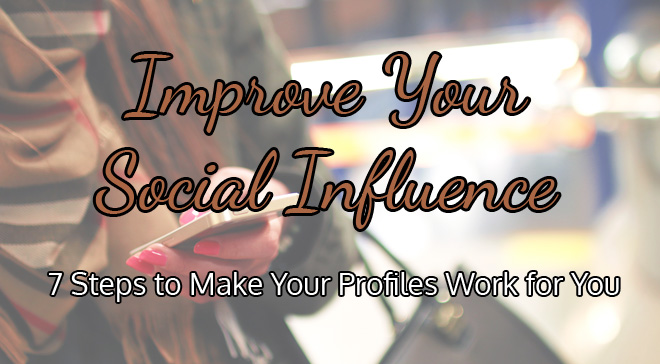
1. Create and Curate Your Profiles
Are the social platforms that you hang out on the ones that are most beneficial to you and your professional goals? It's likely that you're already on Facebook, Twitter, and LinkedIn, but if you're in the food, travel, fashion or lifestyle business, you should also have an active Instagram and Pinterest account, with relevant and up-to-date profiles on each.
The trick to using all of these platforms is to present yourself as someone interesting who knows how to use each of their social platforms in the best way possible. Edit your profiles to fit with your goals for each social platform and include links, if possible, as well as a well-taken photograph of yourself.
2. Share Your Content
Facebook, Twitter and Instagram operate essentially as "show and tell" platforms for content, so if you just knitted a great kitty sweater for your Etsy store or wrote a terrific blog post reviewing all the Air BnB locations in Thailand, share it and show your networks your skills.
In particular, content that educates, entertains, or encourages people will recieve a better reception than something which is self-serving or pitches a product. For example, if every other post is a plea for someone to buy your book, it's more likely that they will start ignoring you than your post will suddenly inspire them to log into Amazon.
3. Be Nice
In order for people to care about you, you have to care about them. Be genuinely interested in what others in your community or profession are doing, and don't hesitate to share their successes across your networks.When you are actively sharing and being interested in other people it will encourage them to do the same for you, because you are demonstrating not only that you're interested in them, but that you are willing to help them share their successes by showcasing or congratulating them on your network for everyone there to see. At the end of the day, people want to see nice people succeed, and the quickest way to success is to actively be nice to everyone you meet.
4. Be a Part of a Community
Social media is social first and media second. What I mean by this is make sure that you're using social media to build relationships, not just to broadcast your successes or thoughts.
For example, every Tuesday morning on the way in to work I participate in #blogchatca, a (you guessed it) Twitter conversation about blogging. I'm also a part of Kyla Roma's Daring Creative facebook group, and participate in the monthly #DaringCreative twitter chats she hosts as well. Being a part of these communities not only expands my network to people that I might not have otherwise been able to connect with, but also allows me to develop relationships with people over a shared interest and connection
5. Be Generous with Your Knowledge
One of the amazing things about digital communities is the amount of knowledge that has become available as a result of sharing online. I've found that in a lot of circles this has led to a "pay it forward" model of sharing information - that is, that openly giving and sharing your knowledge will pay off for you in the end.
Generously share news, knowledge, tips or other pieces of information that you think will help others achieve their goals. This not only helps others, but also works to build your social profile as someone who now only knows what they're talking about, but is confident enough in that knowledge to be willing to help others learn, as well.
6. Be Consistent
Being consistent means committing to a certain schedule of publishing and sharing content regardless of how you feel. We all have slumps and bad days (and hey, even I take a break from Twitter if my day is jam-packed) but what matters is that over the long-term you have a consistent presence online.
This not only means posting and sharing content, but also responding to people who contact you and having the discipline to do so in a way that is in line with your persona. Eg: don't use excessive offensive language, don't snap at or belittle people because you're having a bad day, etc.
Which brings me to my next point:
7. Keep Negative Thoughts Private
Venting online, "vaguebooking" or "vague-tweeting" (posting passive-aggressive stuff without stating who you are directing it at), etc is not okay. Don't do it.
If you've been online for any length of time you've probably engaged in this sort of behaviour before (it's okay, I have, too, once upon a time) but it's time to grow up and start behaving like adults online.
The reason behind it is this: you never know who is reading your content. You might think that your Facebook is friends-only, but how do you know that a friend-of-a-friend won't see an inside joke and take offense? Or that slanderous thing you Tweeted about a co-worker might be a little too specific, and you might find yourself out of a job. Better to be safe than sorry.
In addition to potentially landing you in hot water, having a negative online persona has long-lasting consequences: people will think of your negative, snarky comments before they think of a helpful link that you posted, so even if you're generally positive online a bad day or a slew of passive-aggressive comments can destroy the online reputation you've worked so hard at building.
There are a multitude of ways in which your bad attitude could backfire, so it's safest to keep it offline completely (or, focus on being more positive.)
These are just a few steps that you can take to start expanding your social reach and growing your influence online. Do you have any suggestions? I'd love to hear them!
Crowdfunding Crash Course: Randy Hoyt - Foxtrot Games
- by Alyson Shane
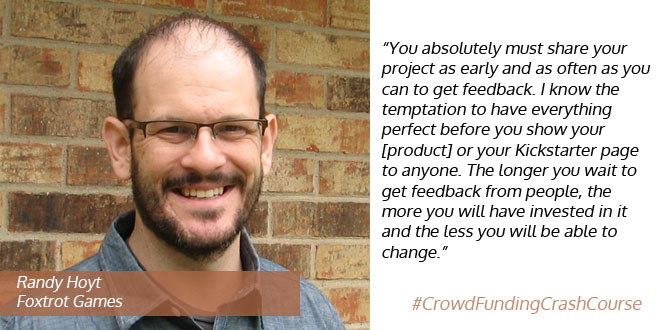
Randy Hoyt builds websites and runs Foxtrot Games, a small board game publishing company that successfully raised funds on Kickstarter for the jungle-themed Relic Expedition and the Chinese lantern-themed tile game Lanterns: The Harvest Festival.
You’ve successfully crowdfunded two tabletop games: Relic Expedition and Lanterns: The Harvest Festival. Can you briefly describe both games?
Relic Expedition is a jungle adventure game where players act as Indiana Jones like explorers trying to find a set of ancient relics hidden in the jungle. The board starts small, with only a few of the tiles revealed. As players explore the jungle, new tiles are revealed and the board grows in unpredictable ways. For 2-4 players, it plays in about an hour.
Lanterns: The Harvest Festival is a tile-placement game set in imperial China. Players act as artisans decorating the palace lake with floating lanterns. On your turn, you place a tile, which gives every player (even your opponents!) a lantern card based on the orientation of the tile. Players dedicate these lantern cards in various sets to become the most honored artisan before the festival begins. Also for 2-4 players, this plays in about 30 minutes.
Why did you feel that the crowdfunding model was the best way to promote tabletop games?
When we finished designing and developing Relic Expedition, we had a really fun game on our hands that we knew a lot of people would love. We could have submitted it to other publishers, but I think there were two main reasons that we did not. (1) We wanted full creative control over the final product, and (2) we wanted to gain the experience of crowdfunding a physical product. I think crowdfunding made sense for us because we didn't have the upfront cash or the audience, and Kickstarter gave us a way to find a bit of both.
Crowdfunding isn't right for every tabletop game, and it's not a magic bullet: it turned out to be a lot more work than I would have expected. We plan to continue to use crowdfunding for our projects for the foreseeable future, but I suspect that at some point — or at least for some projects — it won't make sense.
You’ve used Kickstarter for both campaigns; why and how did you choose it over other crowdfunding options available?
There is such a strong board game community on Kickstarter. A few people I know have tried other platforms, and they just haven't had anywhere near the success they've had on Kickstarter. If you want to use crowdfunding to raise money for a tabletop game, I don't think there is any other good option right now.
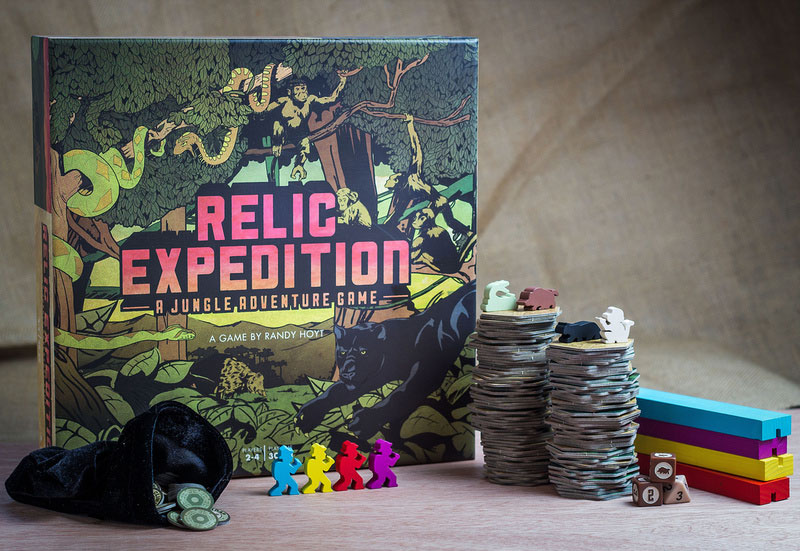
How big was your budget before you launched each campaign?
With each game, we have spent about $4,000 on artwork, review copies, video work, and marketing before the campaign began. We started Foxtrot Games with $10,000 set aside to develop Relic Expedition. We thought the extra $6,000 would give us enough of a buffer in case things didn't go exactly as planned. But as first-time creators, there was a lot about production and fulfillment that we didn't really understand or appreciate until we went through it.
A lot of little things happened along the way (a miscommunication here, a mistake we didn't catch there, a few inaccurate estimates everywhere) that all added up to the project costing more than we had planned. We ended up needing about $15,000 more than we had raised, our initial seed money plus $5,000 or so more. We did have almost 1000 extra copies of the game, and we were fortunate enough to sell a good portion of those in retail to earn back some of our initial seed money.
After Relic Expedition, we had a much better idea of what we needed to do to make a board game that could be profitable. That project had almost twice as many backers, and we are on track to make back a lot of the money we lost with Relic Expedition. On top of that, we have inventory to sell and a much better plan for selling it than we did the first time. We haven't mailed rewards to backers yet, so there is definitely still room for unexpected costs ... but we are in much better shape than we were at this same point in our first project.
How far along were your projects before you felt ready to launch the crowdfunding campaigns? In hindsight, would you have preferred to be farther along, or to have crowdfunded earlier?
The game mechanics were complete for both games before we launched; I think that's essential. With board games on Kickstarter, people aren't backing an idea: they are backing the manufacturing of a game that is finished. This isn't true for every category on Kickstarter, but it's definitely true for board games.
When we launched Relic Expedition, we were not as far along as we should have been. We should have had the box cover done, and we did that with Lanterns: that's a really important piece to sell the game and to set the tone of the project. We should have had more game artwork done so that we could have sent prototypes to reviewers earlier and recorded a game play video earlier: we did both of those things with Lanterns, and they helped quite a bit.
It's interesting now to look back (two years later) at the game play video we recorded during the first week of the Relic Expedition campaign: I only showed three colors of relics because that's all we had done! We finished the first version of all the artwork for the base game during the campaign, but we still had a lot to work to do after the campaign. We had to design the rulebook and the box. We also had to rework some of the pieces: we went through four different versions of the backpack trays before they worked like we wanted, and we changed the colors of the relics once after getting a color proof. We really should have had a lot of that done earlier.
It's not bad to have work to do after the campaign. With Lanterns, we intentionally left some things until after the campaign, things like creating the production files and designing the back of the box. If you don't reach your goal, you would hate to have wasted money on files that you don't need.
How did running the two campaigns differ from one another? Did you learn anything from crowdfunding Relic Expedition that you successfully applied to the Lanterns campaign?
The Relic Expedition campaign funded on Day 30 of 35. After the initial rush, we had a lot of agony trying to figure out how to improve the campaign page and how to get the word out. We spent a lot of time and money on the game itself, but we should also have done so much more to prepare the campaign and promote it in advance.
It's hard as a first-time creator to know what you need to do. For example, we didn't have a video teaching people how to play the game when we launched. We scrambled to make one during the first week; that and everything else we did under the gun during that first campaign took quite a toll on us. We did a much better job preparing and promoting our second campaign in advance, and we funded on Day 6 of 30. That made the campaign so much more enjoyable. I often jokingly tell people asking for advice, "Reach your goal as quickly as you can." It really makes a lot of difference in the trajectory of the campaign — and on you emotionally as a project creator.
What sorts of tools did you use to market your campaigns? Do you feel like you did so successfully, and if not, what could you have done differently?
We did a much better job with marketing and promotion for Lanterns, and we did most of that work before the campaign started. We had started to gather a mailing list when we released Relic Expedition, and we announced to that list that Lanterns would be our next project about three months before the campaign. We shared different pieces of artwork on Twitter and Facebook as they were completed. I also wrote some blog posts about the preparation work I was doing, and a couple of them got shared quite a bit before the campaign. I attended Gen Con and ran some playtests and demos.
Those events went incredibly well: I met some people who became very avid fans of the game and our company, and I also got the confirmation I needed that the game was ready. I mailed about 25 prototype copies to reviewers about 6 weeks before the campaign, and many of them published positive reviews. Those reviews helped promote the campaign to their audience, yes, but more importantly they gave people who found the campaign through other means an idea of whether or not the game was right for them.
During both campaigns, we advertised on BoardGameGeek (BGG). With Lanterns, I waited until we had reached our goal to run those ads. I felt that BGG users would be more likely to back Lanterns after it had already reached its goal. I know that seems backwards, but there's a lot of uncertainty when you back a campaign that hasn't funded. If you pledge, have you spent the money? Maybe. You only get charged if the campaign funds, which may or may not happen. If you pledge, you can’t really spend that money elsewhere. Or if you pledge you might forget that you backed the project (thinking it wouldn’t really fund anyways) and then decide to spend your money elsewhere. It’s just not worth the uncertainty for a lot of people. Once a project has reached its goal, it’s much more straightforward and certain: you pledge, you give the money, and you get a game.

Can you explain how you managed the Lanterns campaign?
Even with all the preparation, running a campaign is still a crazy time. I know project creators who plan everything with a detailed timeline, and I know project creators who fly by the seat of their pants. I lean towards the planning side, but I think it'd be foolish to try to plan everything. It kind of feels like running through a timed obstacle course. A lot happens during the campaign, and you have to be flexible and adapt as it happens.
I took the first day and the last day of the campaign off of work. You get a lot of visibility to a campaign when you first launch, and I wanted to be sure I could answer questions and comments quickly. I planned the dates for the campaign so that I wouldn't be out of town for the first weekend or the last weekend. I had worked to schedule as many reviews and interviews as I could before the campaign, but in those first few days I got a lot of requests from people I didn't know to do more of them. I had 12 review copies on hand that I could send out at a moment's notice, and I ended up mailing out most of them. I checked Facebook, Twitter, and BoardGameGeek quite a bit, responding to questions and sharing updates and comments as they came in.
Sending out regular updates is important. You want to keep the campaign in people's minds and keep them excited, which makes them more likely to share the campaign with others. But you also don't want to annoy them, so updates need to be meaningful. I averaged about two updates a week. Before launching, I had written the text for the first update. It provided a list with links and other information for backers to share the project with others, and I posted that a few hours after launching.
Beyond that first update, I would write the other updates at least the night before and then send them out during the day. I had brainstormed ideas for content that could be used for updates. If there wasn't any news to share, I wanted to be able to share some interesting backstory about the project. The Relic Expedition campaign needed more of those kind of updates because it didn't fund as quickly. With Lanterns, we also had some artwork that backers could vote on, so the news around that process gave me regular content for updates. In fact, I had written the text for an update about one of the components in Lanterns (the favor tokens), but I didn't end up needing that to fill an update during the campaign. So I saved that for after the campaign while we were waiting for the games to cross the ocean and get through the port delays.
What were your biggest challenges during your campaigns?
There's a lot you can do during the campaign to promote it: it could be a full-time job for multiple people. If you have the time, that's great. But if you don't, you have to be really smart about how you spend the time you have. Promoting the project before the campaign works well to get other people excited about it so that they will promote it during the campaign. I spent some extra time beforehand to put things in place to make other things like mailing out review copies take less time: I had extras printed and someone else at the ready to mail them out if I needed them. Again, it feels like running through a timed obstacle course: the better you prepare, the more you can accomplish in that time.
What’s the most valuable advice you could share with aspiring crowdfunders?
You absolutely must share your project as early and as often as you can to get feedback. I know the temptation to have everything perfect before you show your game or your Kickstarter page to anyone. The longer you wait to get feedback from people, the more you will have invested in it and the less you will be able to change. The first few days of a campaign are the most important, and you really want your page as good as it can be right from the start. We made a lot of mistakes on our Kickstarter page for Relic Expedition, and we got some good feedback after we launched; but it would have been much better for us if we had addressed some of those issues before we launched.
I'll give you one example. For both games, I wrote a script for the video and created a really rough storyboard to send to the person creating the video. With Relic Expedition, I didn't want anyone to see this: it was too rough and didn't represent the high quality bar we wanted to set. With Lanterns, however, I realized that feedback was so important. I posted the rough storyboard on YouTube and shared it on Twitter and Facebook so that I could get people's feedback. A few people gave us feedback, and I was able to incorporate that into the final video. We got a lot of feedback on every aspect of the Lanterns campaign from a lot of people, and I knew the campaign page was in good shape when we launched it.
This post is part of the #CrowdfundingCrashCourse series. You can find the entire series of interviews and summary posts here.
To my Grandmother in her hospital bed in Toronto
- by Alyson Shane
I asked about calling or sending you flowers but it seems that
you're so close to death that there isn't any point
the doctors
they say that this might be it.
But how can this be it?
You, my immortal grandmother
whose laugh lines and permed hair
somehow made you look
decades younger
than your ninety-odd years
How could old age catch up with you?
Part of me believed that it never would
I suppose.
I assumed that you would use your
razor quick wit
nimble fingers adorned with heavy rings
the cane the doctor made you start carrying
to fend it off
until the end of time.
It seems impossible to think of you
sinking into a too-big hospital bed
smelling of chemicals instead of Eau de Parfum
collarbones poking out from a paper gown
which has no pockets to put tissues
and little lemon-drop candies.
You, my grandmother
who lived on Mountain Avenue since you were two
in a house that hosted four generations of our family.
I wish I could carry you back there
to sit in the old, wicker furniture
and watch the cars go by.
"The blue one is mine, the red one is yours."
But I will accept whatever happens
because there's no point in
raging
against the universe
but
if something happens
I hope that you know that you were loved.
That you are loved, still
that you you exist in the marrow of my bones
in my crooked pinky finger
along the curve of my jaw
in my wavy, unmanageable hair
and the memory of you that lives on through me.
You are always my
Grandma.
5 Steps to a Business Blog
- by Alyson Shane
One of the best ways to make your business stand out online is by blogging regularly. It helps establish you as a thought leader in your industry, gives you a way to share things relevant to your audience or client base, provides valuable SEO content, and gives you tons of information to add to a newsletter (if you don't have one, see why you should here.)
However, for someone who has never blogged before it can be a daunting task to tackle head-on, which is why I've broken things down into five easy steps. Let's get started!
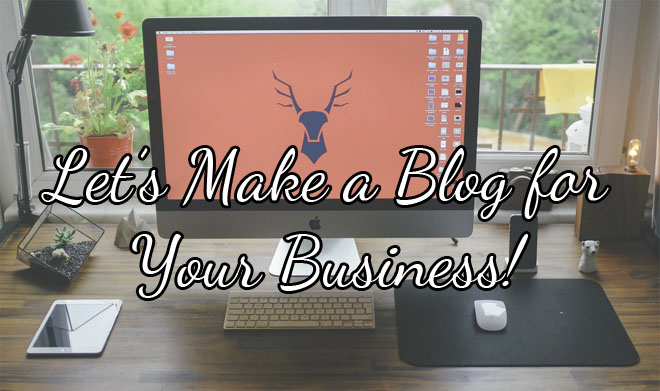
1. Define your blogging goals
Ask yourself: what do I expect to get out of blogging for my business? If you can't answer that question, take a look at a few common blogging goals below:
- Establish yourself as a thought leader in your industry. Ideally people will read your blog and see that you know what you're talking about, which in turn makes them trust your business.
- Create unique share-able content for social media. If all you do is share information about sales and products then people will stop paying attention pretty quickly, because people want to feel like you're doing more than just selling a product or service at them.
- Improve your Search Engine Optimization rankings. Instead of ranking for keywords relevant to your business. products or services, you can rank for the topics that your audience or customers are interested in as well.
The biggest thing to keep in mind when setting your blogging goals is how they align with the kind of content your audience and customers want to read. By posting interesting, relevant content you'll guarantee a growing group of dedicated readers.
2. Do your research
Before you hit 'publish' on your first post, take some time to see what your competitors are blogging about. The topics they discuss, their tone (formal or informal), and the style of posts (video, text-based, infographic, etc) give you a better understanding of what your audience expects, and if you should be blogging at all.
Once you've identified a few competitor'd blogs, spend some time looking into things like post frequency, which topics they discuss, who writes them, and how much engagement they receive.
3. Choose a blogging platform
The software you choose will depend on a variety of factors, such as how much time you want to spend setting up your blog, how customized you want it to be, how much functionality you want, and whether you want to integrate it into your existing website (spoiler alert: you do. Don't drive traffic away from your main website if you can help it!)
The best thing to do is to have your entire site hosted on a blogging platform such as WordPress, Tumblr, Medium, SquareSpace, or Blogger. With the exception of Medium you can change the design (or theme) for your blog to any of the offered themed, or you can tweak the existing templates, if you're savvy like that. This allows you to have all of your business' info in one place.
I would also recommend using your own domain name instead of the free URL generated by the platforms (eg: the WordPress site will read "www.yoursitehere.com" instead of "www.yoursitehere.wordpress.com." Paying for a domain is cheap (mine is $7/mth) and is incredibly more pforessional-looking, so if you're serious about your website and your blog, make sure that you buy a domain and point it to the hosted site.
The upside to hosted solutions is that you don't have to maintain the website itself, though it does limit your customization.
4. Decide which topics to cover
If you've spent some time defining your goals and doing your research, then you should have a pretty good idea as to what kinds of topics to cover for your business blog.
Still stuck? Follow these steps for some additional inspiration:
- Think broadly about your topics. Don't worry about specific post titles - think about the kinds of topics that would interest people involved in your industry. Eg: if you work in content marketing, write about topics like social media.
- Break these larger, broader ideas down into subcategories. For social media this could look like: link building, SEO tips, making the most of different social platforms, etc.
- Once you have these subcategories you can start doing research into keywords and popular topics. One of the best ways to do this is to use GoogleAdwords Keyword Planner, which will give you up to 800 related keyword phrases for each of your subcategories.
A word of warning: don't blog about things that you don't understand! If you think you want to blog about a particular topic, do your research first. Read extensively about your desired topics and then start writing.
5. Plan, plan, plan!
One of the most important steps is to plan out a posting schedule. An abandoned, empty blog is worse than no blog at all, so based on your competitor's blogs, figure out how often you should be posting new content (daily, weekly, etc) and if this is something that you can manage on your own. If not, consider getting an employee to handle researching and publishing your content for you, or hiring a ghostwriter who will write on your behalf.
Once you know who will be writing and how often, outline your blogging goals in a specific manner so you know what milestones you want to achieve and when. Some examples include 10,000 visitors per month, a 6% conversation rate from readers to customers, or to increase search visibility from 15 keywords to 75 keywords. Ultimately, these goals are up to you.
Make sure to also outline a process for coming up with topic ideas and turning those topics into written, edited and published content. You don't need to include exact dates and times per-se, but something like "publish a blog post every Friday" can be sufficient.
The process of creating this sort of content plan is called creating an Event Calendar, which is a key factor in making sure that you always have fresh, interesting content to post on your blog and share across social media.
You're done!
By this point you've thought about what sort of blog you need to have, how you're going to host it, what sorts of topics you're going to discuss, and who will be writing your content for you.
While these aren't always easy steps to implement, they are crucial to make sure to you start blogging the right way, and that your blog doesn't fizzle up and die after a few posts. By planning in advance and doing your research, and can make sure that your blog will bring you the results that you want for years to come.
Do you have any tips for starting a business blog? I'd love to hear them!
365 Days
- by Alyson Shane
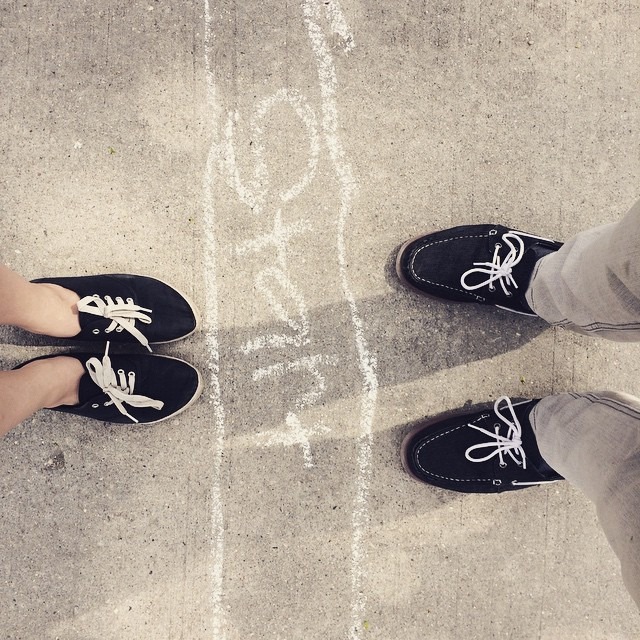
Today marks my one-year anniversary with super-talented megababe John Luxford. That's 365 days of silly jokes, smiles, laughter, and shared experiences.
It's been an incredible ride. Fulls of ups, downs, and more amazing stories than I can count.
But this post isn't about my relationship.
Rather, it's about the first day, 365 days ago, that I took control of my life.
Before May 7th, 2014, I was floundering.
I had been fired from my job at Direct Focus and my career was directionless.
I was in a relationship with someone whom I had outgrown, but I was too insecure to realize it or do anything about it.
I had been partying my weekends away for years and the strain on my health and my wallet was taking its toll.
I had crippling anxiety attacks and routinely broke down, but didn't have the strength to admit that there was a problem.
I was maintaining a destructive and strained relationship with my parents simply because I thought that it was the "right" thing to do.
Things started to fall apart. My life began cracking at the seams.
I couldn't do it anymore.
So on this day last year I took the first step in taking control of my life: I left my boyfriend of nearly five years. With it went most of my "friends" and the party lifestyle that I had become so accustomed to.
Those first few weeks were some of the most difficult I've ever faced. I hadn't realized how much I had relied on my toxic lifestyle to mask much more deep-seated issues in my head and heart, and having to face my mistakes and look critically at my life wasn't easy, to say the least.
It was lonely at first, but removing myself from those influences gave me the space to clear my head and start addressing my issues without the haze of alcohol, partying, and the inevitable Monday-morning low that had clouded my mind for so long.
In the following months I focused on personal reflection and using my new 9-5 as an opportunity to learn some new skills. I picked up my first freelance client that summer and the realization hit me like a ton of bricks: I could do whatever I wanted to do.

I revamped my blog and started sharing the things that were relevant to me. Not just what I'd done that weekend (though sometimes I still share the cool things that I do) but my knowledge, my learning, and most importantly, my struggles. Who I really am.
I've acquired a handful of really great freelance clients while kicking ass at my 9-5. I've made enough money on the side that I've managed to make a serious dent in my student debt - something I could have never done in a year without my freelance work. At this rate I might pay it all off this year, who knows.
I work out regularly and because I don't party like I used to, my body actually responds to the hard work I put into it. I'm in the best shape of my life and I'm only getting stronger.
I stopped putting effort into relationships and friendships that detract from my life. The people I have in my life are smart, driven, kind, sincere individuals whom I know I can turn to in a crisis. This includes addressing issues with my family and standing up for myself.
I've started to address and work on my anxieties. I talk openly about my struggles because I want to help people who experience the same doubts and worries that I do. I work every day to be open and honest with myself and the people in my life about how I feel, and why. It's hard, but it's worth it.
In 365 days I have changed into someone so utterly different from who I used to be that I barely recognize myself sometimes.

I didn't manage all of this because I have a great boyfriend and a new relationship (though that helps), I did it because I started to take ownership of my life and to start making decisions that were in my best interests.
My relationship with John started on May 7th, sure, but I really feel like our anniversary means so much more to me than just the start of my relationship with him: it's the day I finally started taking what I want from life and not being so afraid all the time.
Here's to another 365 days of positive change and amazing new opportunities!
"being deeply loved by someone gives you strength, while loving someone deeply gives you courage"
- Lao Tzu
10 Steps to a Better Email Newsletter
- by Alyson Shane
I love using email newsletters. They're one of the easiest ways to keep in touch with your current audience or customer base is through email newsletters. They're low maintenance, cost-effective, easily measurable, and can be extremely beneficial when written, designed and delivered correctly.
I've used MailChimp for clients for a while and recently started sending out my own newsletter (shameless plug, sign up here!) so I figured that it might be helpful to share some tips that I've learned about how to write and design a newsletter effectively.
Why have a newsletter at all?
A newsletter is actually one of your most valuable tools because it allows you to communicate all kinds of messages, and a well-planned newsletter will allow you to:
- Remind your audience and customers that you exist
- Build your brand
- Increase customer loyalty
- Boost sales
- Raise awareness of what you offer
- Direct traffic to your website
The trick to an effective newsletter is to keep up with it. It's a long-term investment - you can't stop and start again. Newsletters are only effective when you produce and distribute them on a regular basis.
But if you've never put a newsletter together before it can seem kind of daunting, so below I've outlined 10 steps that I've identified, which make the process a lot easier:

1. Figure out who you want to send it to
In order to start sending out a newsletter, you need to figure out who your intended audience will be. Are they customers, staff, contacts, bloggers - or a mix of all of them?
Figuring this out will help you determine the kind of content that you want to include in your newsletter so that it will be appealing for them to open and actually read. This might even require sending our multiple newsletters, depending on your intended audience. For example, you might not want a client seeing confidential business information that you want to distribute to your employees.
2. Pick a format and stick with it
Before you send out your first newsletter, spend some time playing around with different layouts and formats. Once you've found one that you like, stick with it. Frequency in newsletters is key, but so is consistency - people will expect to see the same pieces of information in the same place each time the open it.
Consistency is important because not only does it help the reader recognize that it's your content, but it will help them navigate it effectively to find the content that they want to read.
3. Establish a style
The style of your newsletter plays a big part in establishing the kind of perception that you want to create with your readers. Some questions to ask which will help you determine this are:
- Who are your audience and what do they like?
- What is your brand personality?
- What niche or industry is your business in?
- Do you want your newsletter to be informal or serious?
- Do like it to be focused on sales or more educational?
4. Keep it short & sweet
The average person will only spend 20 seconds reading your newsletter, so trying to cram a ton of information into that span of time will get overwhelming and they'll either totally miss your message, or (worse) will stop reading altogether.
Ideally you want to feature one to three key things and have a list of other relevant links somewhere else in the body of the newsletter.
5. Sort out your content
This can vary widely depending on the business that you're in, but these tips below should help you clarify what should actually go in your newsletter:
- Special announcements
- News or blog posts
- Highlighting key products
- Testimonials
- New products or special services
6. Keep people interested
Even though you have a beautiful newsletter doesn't mean that people will continue to open it and remain interested long-term; you need to continue to generate content that people want to read. Here are a few ways to make sure you stay on track and provide useful, interesting information- Answer questions. What do people ask you about your work, your services or your business? Focus on these issues.
- Keep your objectives in mind. What are your business goals? How can your content help you achieve them?
- Ask around. Ask your customers and clients what they want to see, and ask for ongoing feedback so you can keep refining your content.
- Sign up for newsletters that cover similar topics and see what others are doing effectively.
- Include information relevant to the industry that you're in. This could be a recent relevant news item or statistic, or even something as simple as a quote.
- Create regular topics. Ensure that your template has sections which cover the same areas each time.
7. Write an attention-grabbing headline
The subject of your email newsletter is just as important (maybe more so) than your content, because it's what grabs people's attention and encourages them to open the newsletter. With this in mind, a headline should include one (or more!) of the following criteria:
- Include benefits. The hook should answer a question or appeal to an emotion.
- Get personal. A more personalized subject line or headline increases the likelihood that your recipients will open the email.
8. Avoid the 'spam' folder
After you've gone through all this effort, you want to make sure that your newsletter doesn't go straight into someone's trash or spam folder. Here are a few ways you can avoid getting junked:- Include a clear and specific subject line
- Don't be offensive or unethical in your content
- DON'T USE ALL CAPS (ever!)
- Don't include private or sensitive content
9. Spell Check
By now you should have a pretty good idea of how you want your email newsletter to look and feel, and maybe you've even written out your content and selected a few pictures. But before you click 'send' on the campaign button, go over everything again. If you can get someone else to look it over, even better, as a typo of misplaced image can totally throw off your message.
10. Test it out
Most newsletter services will give you the option to send out a test email before you send it out to your full recipient list. Always, always send out a test email! This gives you one last opportunity to go over and identify any spelling issues, weird image sizes, broken links, and content placement that you might have missed previously. For reference, for each newsletter campaign I send out I generally send myself at least two text emails, just to be 100% certain that everything is in working order.
That's it! You're done!
You now have a great, attention-grabbing newsletter that will help you keep in touch with clients and your audience! Still confused? That's okay! Shoot me a message and let's chat!
Do you have any advice, tips or tricks that you employ to make your newsletters stand out? I'd love to hear your thoughts!
The Issue with Instagram
- by Alyson Shane

Instagram has a problem with it's sharing settings that the developers seem unwilling to fix, and could be considered a security issue.
Some backstory: I manage a few social media accounts in addition to my own personal account, one of which is a client's Instagram account.
If any of you manage multiple Instagram accounts then you know that the app isn't designed with this use in mind: in order to switch between multiple accounts you have to sign out of one and sign in to the other each time you want to switch, which is a huge hassle.
But this post isn't about what a pain it is to switch accounts, it's about a more glaring and potentially embarrassing issue.
When I switch between accounts, Instagram keeps the linked Facebook and Twitter accounts from the previous login. What that means is that when I post something to my Instagram feed it gets shared to my client's account instead, even though I'm completely logged out of that account.
This has gone both ways: I've had their account post to my social feeds, and vice-versa and nothing I do is fixing this issue.
I've tried resetting the linked accounts multiple times on both profiles.
I've tried writing to Instagram (twice now) with no response or bug fix.
I've posted about it on /r/Instagram asking for help/advice with no luck. Nobody seems willing to acknowledge or fix it.
This is a huge issue with their security settings. What this means is that once you’ve logged in with one account, if you or someone else using your phone later logs into their own account, they can effectively post on your behalf to your Facebook and Twitter, without you knowing and bypassing any account protection.
I love using Instagram, and it's my most heavily-used photo-sharing app. The added bonus of an additional community to engage with is great, and the ability to cross-post across multiple accounts is a huge time-saver.
However, the fact that there has been an ongoing security issue that hasn't been resolved really worries me, and it makes me wonder how many other people out there are experiencing a similar issue.
I'm at the point, now, where I've notified my clients that I won't be using their Instagram account for the foreseeable future, and am considering simply moving to another photo-sharing platform like Tumblr instead, so this may not even be something that I have to worry about for much longer.
But if you use more than one Instagram account for anything, I'd double-check those linked account settings if I were you.
